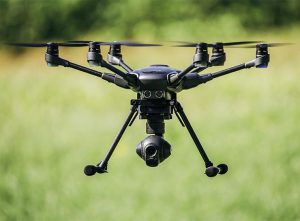Alternative measures of credit risk by Simon Hodgkinson
People in developing economies can increasingly use their private information as a way to secure credit, but is this a good thing?
Easy access to credit is essential to the proper functioning of many high-income economies. Governments, corporations, and individuals all rely on the ability to borrow money. Lenders offer credit based upon verifiable income, expenses, and a person’s pattern of previous loan repayments.
Unfortunately, this system doesn’t fit the circumstances of many people in developing economies, who tend not to have bank accounts or a history of formal borrowing. This means that they are effectively excluded from getting credit, and may miss out on economic opportunities as a result.
In an attempt to address this, recent research has focused on identifying behaviors (other than loan repayment) that might provide an alternative way to predict someone’s creditworthiness.

“You call every day to check up on me. You are so responsible….”
A technological solution
People in developing economies may have had limited interactions with the formal banking system, but they generally have a long history with their cell phone operators. For example, in Ghana, only 40% of people have a bank account, but 83% of adults own a cell phone.
This provides a useful opportunity, because cell phone operators collect a rich data set that provides remarkable insight into many aspects of our lives. They know all the locations that we visit, when we go there and for how long, who we communicate with, how quickly those people respond to our messages, and so on.
Armed with this data, machine learning researchers have generated new insights that can outperform traditional credit scores. For example, it turns out that the size and strength of someone’s social network (as indicated by call records) is a good predictor of how likely they are to repay a loan. Another strong indicator is mobility – people who visit three or more locations every day have repayment rates that are better than those who stay at home or visit one other location.
These new models of behavior have given some lenders the confidence to offer credit based upon access to the borrower’s cell phone data. This is an avenue that didn’t exist before, and it can be transformational for those who benefit from it.
There is also a benefit to the wider population. The money that people borrow usually supports their local economy. In addition, if lenders can accurately identify people who are unlikely to repay their loans, they are able to cut their overall costs and can afford to charge lower rates to the remaining pool of borrowers.
Paying with privacy?
Although there are clear benefits to these advances, borrowers should also think about the costs and potential risks.
People who want to borrow in this way must submit to extensive and potentially invasive collections of data. By installing a tracking app on their phones, they allow lenders to see not only where they work, but what time they show up, when they leave, and where they go afterwards. Lenders can track where they shop, where their kids go to school, and which of their contacts they are closest to.

“You can trust us with your information…”
Of course, cell phone providers already collect this data and therefore have the same insights. The question is whether people still view it as appropriate in the context of lending rather than the provision of cell phone service.
It is possible that customers are inured to widespread data collection, or that they view it as reasonable when compared to the benefits they gain by being able to borrow money. They may be assuming that their data is secure, and won’t be sold or misused.
Another drawback is that while machine learning techniques are very good at making predictions, they can be complex and suffer from a lack of transparency. This makes it difficult to challenge the outcome. One particular algorithm used by lenders takes account of over 5,000 distinct data points, which means that borrowers are unlikely to be able to identify and correct errors, or to understand exactly how their data is being used to arrive at a decision.
Finally, relying on cell phone data may increase the overall pool of potential borrowers, but it does so unequally. Going back to the example of Ghana, there is a gender gap of approximately 16% in cell phone ownership, so this method of lending may embed or reinforce other inequalities.
In summary, advances in technology are helping people gain access to credit in new ways. While this is a positive development, it comes with potential privacy risks, and further work is required to ensure that benefits are extended fairly to all groups.













